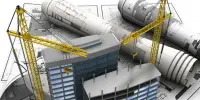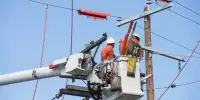Crack sealing, contraction (control) joints, expansion joints, and construction joints are all examples of joint protection systems. Concrete joint sealants reduce the amount of liquid, solid, or gas infiltration and safeguard the concrete from harm. Sealing of various types of joints is discussed below:
Sealing of Cracks in Buildings
Concrete can crack as a result of shrinkage, temperature variations, structural loads, and long-term strain shortening. The cause of the cracking must be established, and any moving cracks must be located, before choosing a sealer. While constraint across the crack should be avoided in some circumstances, structural bonding of a crack may be necessary in others.
Sealing of Contraction (control) Joints in Buildings
Contraction joints are intentional gaps / discontinuities provided to control crack locations to accommodate the contraction of concrete. Reduce the concrete cross section by tooling or saw cutting a junction, usually within 24 hours, to create the requisite plane of weakness. It must be sealed in a way that permits contraction to take place.
Sealing of Expansion (isolation) Joints in Buildings
By leaving a space across the whole cross section between two contiguous structural sections, expansion joints are created. These are utilized to stop the transfer of compressive forces from crushing and distorting adjacent concrete structural units. These compressive forces may be produced by the structure’s expansion, applied loads, or differential motions brought on by the structure’s design or settlement.
Sealing of Construction joints in Buildings
Construction joints are created when concrete laying is interrupted or precast pieces are positioned incorrectly. In order to keep the amount of work that may be completed at once manageable, locations are frequently chosen. They might need to be tightly connected together to retain full structural integrity, or they might need to serve subsequently as joints for expansion or contraction. Depending on the placement order required by the structure’s design, construction joints may run vertically or horizontally.
Methods of Sealing Joints in Buildings
Injection techniques, routing and caulking, bonding, installing pre-molded seals, or putting in the right surface protection systems (such as elastomeric membranes) are various ways to seal connections.
















